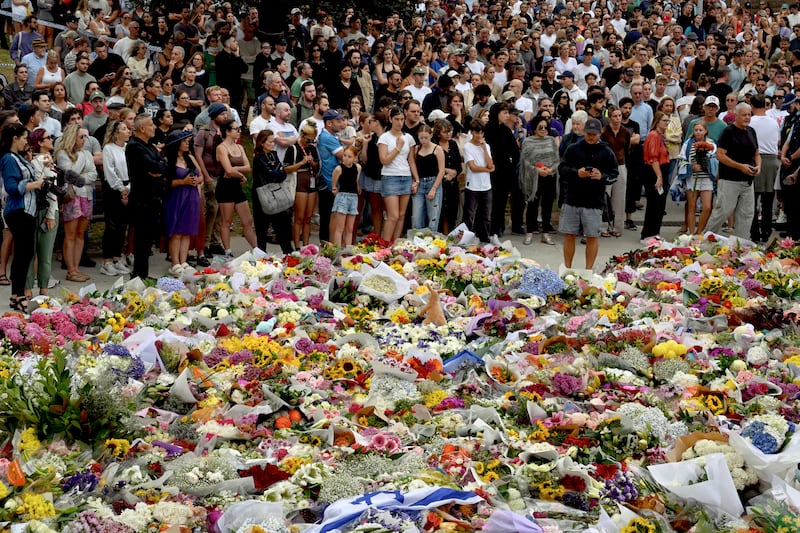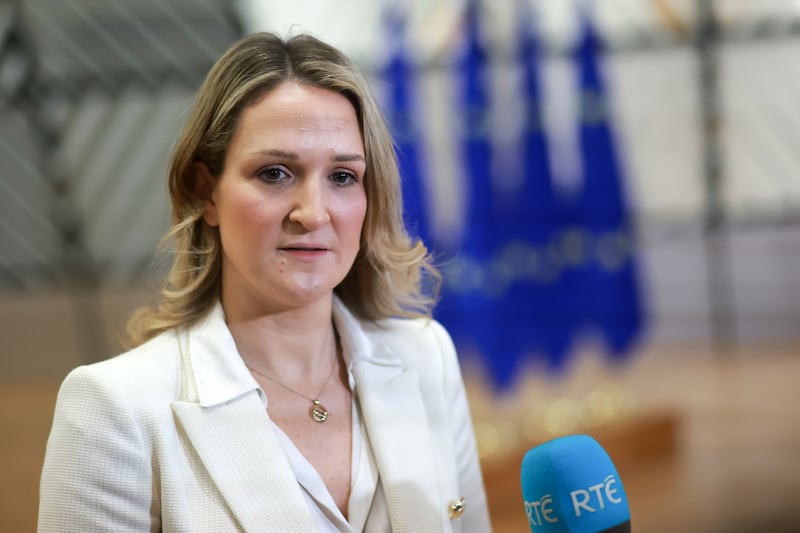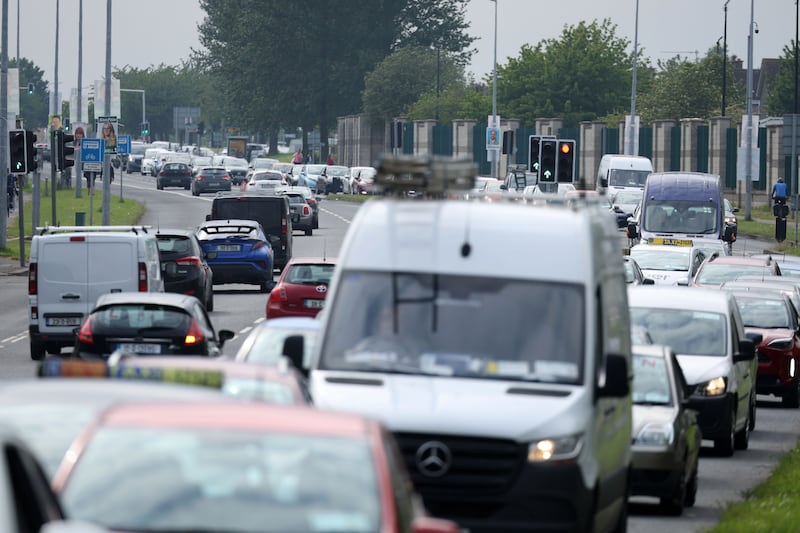A few months into the new academic year, Treasa Fox noticed something different about the student canteen at Technological University of the Shannon (TUS) in Athlone.
“It’s normally such a bustling place,” says Fox, who is head of student counselling. “Lot of noise, lots of bustle, lots of groups just hanging around and having a bit of fun and bit of craic.”
This year, she says, it was much quieter. There were fewer groups of students. Many attending lectures went straight home after class. Student societies struggled to keep members engaged. Other universities reported increases in their student dropout rates.
It wasn’t meant to be like this. The reopening of higher education to in-person learning last September was a hopeful time. After 18 months of university by Zoom, it was expected that students would rush back to embrace the college experience.
READ MORE
Instead, says Fox, many feel disconnected from campus and are struggling to readjust following two years of pandemic-induced isolation.
“Many students are languishing, experiencing anxiety and low mood and low motivation to engage with college work,” she says. “The pandemic was a formative period in their lives. They didn’t feel connected to friends. There were high rates of loneliness and isolation. Those years are a crucial period for identify formation…So there’s a lack of confidence; there’s social anxiety; that can lead young people to feel quite unstable in their identity.”
It is a similar picture across other universities and colleges.
Psychological counsellors in Higher Education Ireland, a representative body for counselling services at third level, estimates that a record 14,400 students attended for counselling sessions last year. This year counsellors estimate that demand for services has climbed by 23-70 per cent, depending on individual institutions. Anxiety, low mood and loneliness are among the most common presentations.
[ Student dropout rates climb across several universities amid concern over low engagement ]
More worrying is emerging evidence that student dropout rates are climbing across many universities this year.
At Trinity College Dublin (TCD) student non-progression rates have been dropping in recent years, falling to 7.8 per cent in 2019, 7.2 per cent in 2020 and 7 per cent in 2021. This year they increased to 9.2 per cent, based on latest figures.
Several large universities have privately confirmed similar trends this year, with dropout rates climbing above levels last seen before the pandemic.
Trish Murphy, acting director of student counselling at Trinity, says younger students, in particular, are struggling to adjust.
“Certainly for first years, they have experienced more isolation than normal cohorts and the adjustment to arriving into social circles of college came with already increased anxiety and histories of far less connection,” she says.
“People’s resilience tends to reside in their social connections and their social networks are where their resilience is embedded — for this group of young people these networks have been drastically curtailed in the past 2½ years and it is going to take some time to build these resilience sources again.”
She says this may account for the decision of many young people to defer their courses or focus on their own wellbeing — or there may be another explanation; that young people have become more discerning about how they spend their time and are willing to wait until they are happy with their decision.
“In any case, what we do know is that more students are presenting at counselling and health services with high levels of distress and they are seeking help with this in order to achieve what they want, which is academic success and pathways into meaningful careers.”
Financial pressure
In addition to mental health issues, students’ union and academics point to another major factor impacting on student life this year: financial pressure.
Áine Daly, president of TUS students’ union, says a dip in student engagement on campus is also due to rising numbers of students having to commute long distances due to a shortage of affordable student accommodation. Many also returned to part-time jobs in the hospitality or retail sector as the economy reopened.
“The sad thing is that these students are being deprived of a college experience,” she says. “College societies and events are where you get to meet like-minded people with the same passions and interests as you…for many students, they haven’t had that.”
About 60 per cent of students at the university are reliant on student grants to cushion the cost of college. Many of these students are also forced to apply for student assistance funds or seek the help of the Society of St Vincent de Paul, says Daly.
Terry Twomey, vice-president for academic affairs and registrar at TUS, says that while it is too early to say what dropout rates will be this year at the university, financial issues are the most common reason for students failing to progress.
“For at least a third [of dropouts], it is the big reason. They are reliant on private rented accommodation and are at the sharp end of rent increases. The cost of accommodation has doubled in recent years, but they don’t have any protection and they aren’t long-term tenants,” he says.
“For those doing part-time work, for every hours over 12 hours worked a week, there’s evidence of a negative impact on student progression. For example, if someone’s working 24 hours, then there’s a very low chance of passing the course.”
The pandemic unemployment payment, he says, may have helped many students by allowing them to focus on college work when universities were shut.

“Because college was online, most students didn’t have to work part-time. Their world revolved around learning, rather than working, the pub, social life and other activities.”
For those who dropped out of college this year, there can also be major financial consequences: those who left between November and January are typically required to pay half fees, while those who dropped out later have to pay full fees (usually €4,000-5,000). There can also be implications for grant recipients.
Low attendance at lectures
Some senior academics also believe more students are struggling due to lower attendance and engagement in lectures.
“It’s been an odd year,” says UCD politics professor Ben Tonra. “For those students that did show up, the classroom experience was fantastic. We had great debates and there was a lively atmosphere — there were just fewer students than normal.”
During a typical lecture he estimates that attendance in normal times would be about 80-90 per cent. This year it has been close to about 60 per cent.
The availability of many lectures online at UCD this year meant students had the option of dialing in remotely or listening back to lectures. While it may have benefited some students, there are downsides, says Prof Tonra.
“There were some students this year that I never saw — they just didn’t turn up,” he says. “For those students who were weaker or more disengaged, there was less grip on them, so I understand why some fell away. They missed the classroom experience, the collegiality, the conversations outside the lecture notes.”
Other academics say the return of in-person exams has been a major challenge for some students.
For many first and second-year students, the exams last Christmas were the first high-stakes assessments since their Junior Cert.
“The emphasis during the campus closures was to give students every chance to progress,” says one senior academic, who declined to be named. “It’s fair to say that we gave students the rub of the green. We had open-book exams and alternative forms of assessment…So the return to in-person exams was a big jolt. I think many were terrified, based on the look of their faces outside the exam hall.”
Another academic agrees: “There was a lot of campaigning from students about moving exams online at Christmas, ostensibly for health reasons. In reality, I think there was huge anxiety about being tested in an exam hall…it was important that we resumed normal exams for academic integrity. The emergency measures we introduced were always go ing to be short term because we had no alternative.”
Next year
Student counsellors and academics are already planning for the new academic year. A key question for many is how to help students feel more connected to college.
Allowing online or hybrid lectures to continue as an option in some universities will be up for discussion. While many academics are keen to return to fully in-person lectures, some student representatives are wary of ending these Covid-era supports.
“We need a meaningful student experience next year, but we also need to ensure students with mobility or health vulnerabilities can continue to avail of hybrid learning,” says Ruairí Power, president of UCD students’ union.
“I think we’ll all have a big role to play in helping to motivate more students to attend in-person events and strengthen that sense of connection with college.”
Treasa Fox says TUS is exploring ways to help boost students’ social skills during orientation sessions. It is an approach they have never needed to take, until now.
“We’re going to focus on basic communication,” she says. “That means when you enter a lecture, don’t sit in the corner where no one else is sitting. It might feel like the safest thing to do, but it’s not the wisest. Go to where the others are. It sends a signal to others.
“We’ll also focus on forming friendships. If students are lonely, then you’ve to look for opportunities to meet people, take steps to enable that … many don’t have those social skills we take for granted. They had a period of arrested development during the pandemic, so many are catching up.”
Fox feels it will take some time for the normal rhythms of student life to return on campus.
“We’re not out of the woods by any means. You hear people saying, ‘the pandemic is over’, but it’s not really. This cohort of students will need time to return to what a normal student experience looks like.”
Pandemic stress: the toll on students
73%
Increase in demand for counselling services in some higher education institutions this year
14,400
Number of students who availed of counselling in higher education institutions last year, a new record
9%
Student non-progression rate in Trinity College Dublin in 2022, up from 7 per cent last year




















